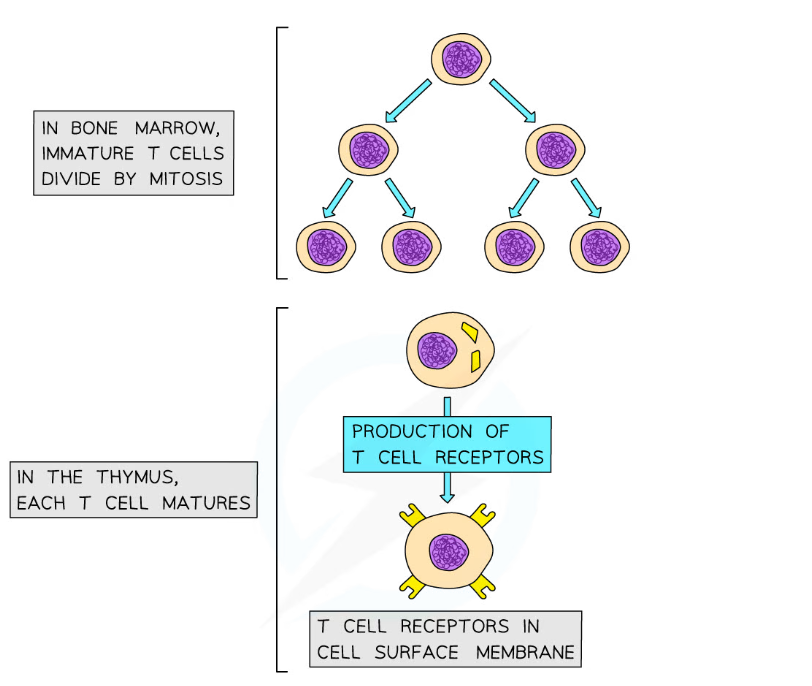- 翰林提供学术活动、国际课程、科研项目一站式留学背景提升服务!
- 400 888 0080
Edexcel A (SNAB) A Level Biology:复习笔记6.2.5 T Cell Response
T Cell Response
- T cells, sometimes known as T lymphocytes, are a type of white blood cell involved with the specific immune response
- They are produced in the bone marrow and finish maturing in the thymus, which is where the T in their name comes from
- Mature T cells have specific cell surface receptors called T cell receptors
- These receptors have a similar structure to antibodies and are each specific to a particular type of antigen


Mature T cells have many different types of receptor on the cell surface membrane; these receptors will bind to different antigens on antigen presenting cells
- T cells are activated when they encounter and bind to their specific antigen on the surface of an antigen presenting cell
- This antigen-presenting cell might be a macrophage, an infected body cell, or the pathogen itself
- These activated T cells divide by mitosis to increase in number
- Dividing by mitosis produces genetically identical cells, or clones, so all of the daughter cells will have the same type of T cell receptor on their surface
- As they divide by mitosis the T cells differentiate into three main types of T cell
- T helper cells
- Release chemical signalling molecules that help to activate B cells
- T killer cells
- Bind to and destroy infected cells displaying the relevant specific antigen
- T memory cells
- Remain in the blood and enable a faster specific immune response if the same pathogen is encountered again in the future
- T helper cells
转载自savemyexams


最新发布
© 2025. All Rights Reserved. 沪ICP备2023009024号-1








